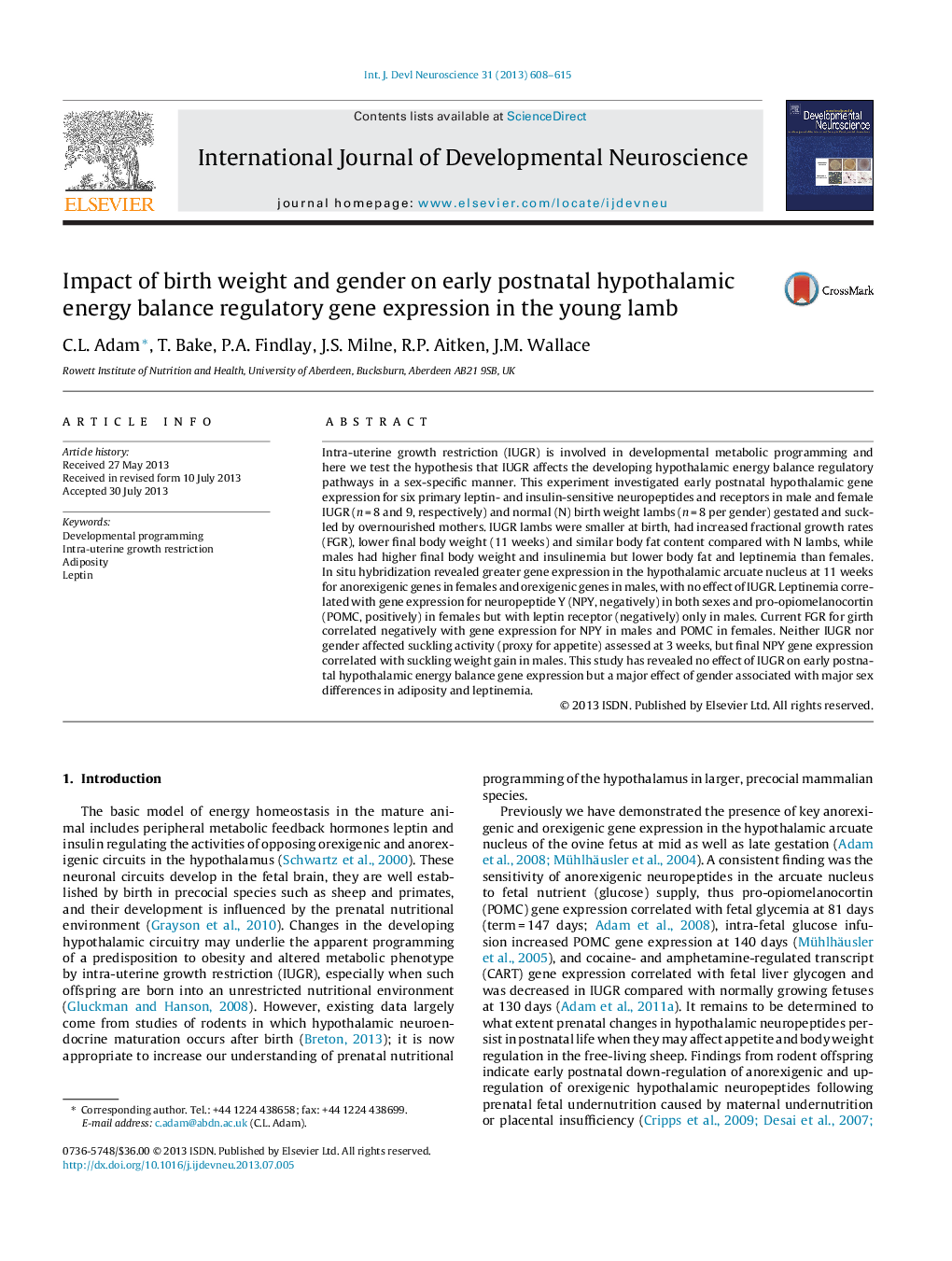| Article ID | Journal | Published Year | Pages | File Type |
|---|---|---|---|---|
| 5893931 | International Journal of Developmental Neuroscience | 2013 | 8 Pages |
Abstract
Intra-uterine growth restriction (IUGR) is involved in developmental metabolic programming and here we test the hypothesis that IUGR affects the developing hypothalamic energy balance regulatory pathways in a sex-specific manner. This experiment investigated early postnatal hypothalamic gene expression for six primary leptin- and insulin-sensitive neuropeptides and receptors in male and female IUGR (n = 8 and 9, respectively) and normal (N) birth weight lambs (n = 8 per gender) gestated and suckled by overnourished mothers. IUGR lambs were smaller at birth, had increased fractional growth rates (FGR), lower final body weight (11 weeks) and similar body fat content compared with N lambs, while males had higher final body weight and insulinemia but lower body fat and leptinemia than females. In situ hybridization revealed greater gene expression in the hypothalamic arcuate nucleus at 11 weeks for anorexigenic genes in females and orexigenic genes in males, with no effect of IUGR. Leptinemia correlated with gene expression for neuropeptide Y (NPY, negatively) in both sexes and pro-opiomelanocortin (POMC, positively) in females but with leptin receptor (negatively) only in males. Current FGR for girth correlated negatively with gene expression for NPY in males and POMC in females. Neither IUGR nor gender affected suckling activity (proxy for appetite) assessed at 3 weeks, but final NPY gene expression correlated with suckling weight gain in males. This study has revealed no effect of IUGR on early postnatal hypothalamic energy balance gene expression but a major effect of gender associated with major sex differences in adiposity and leptinemia.
Related Topics
Life Sciences
Biochemistry, Genetics and Molecular Biology
Developmental Biology
Authors
C.L. Adam, T. Bake, P.A. Findlay, J.S. Milne, R.P. Aitken, J.M. Wallace,
